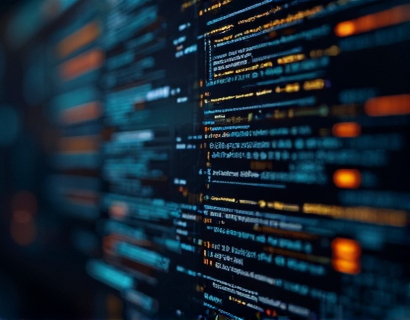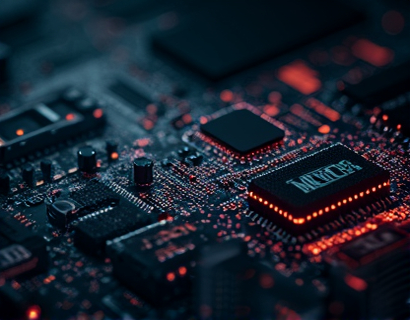Elevate Your EVM-Based Projects: Mastering Scalability and Security with Advanced Layer 2 Solutions
In the rapidly evolving landscape of blockchain technology, Ethereum Virtual Machine (EVM)-based projects have become the cornerstone of decentralized applications (dApps). However, as these projects grow in complexity and user base, scalability and security emerge as critical challenges. To address these issues, advanced Layer 2 solutions have emerged, offering innovative ways to enhance performance, reduce costs, and bolster security. This article delves into the world of Layer 2 solutions, exploring how they can transform EVM-based projects and drive the future of blockchain innovation.
Understanding Layer 2 Solutions
Layer 2 solutions refer to technologies built on top of existing blockchain layers to improve transaction throughput, reduce costs, and enhance scalability without altering the underlying blockchain's core protocol. These solutions operate in two primary modes: off-chain and on-chain. Off-chain solutions process transactions outside the main blockchain, while on-chain solutions introduce new mechanisms within the blockchain itself. Both approaches aim to alleviate the burden on the primary blockchain, ensuring faster and more efficient operations.
Key Benefits of Layer 2 Solutions
One of the most significant advantages of Layer 2 solutions is their ability to significantly increase transaction throughput. By processing transactions off the main chain, these solutions can handle a much higher volume of transactions per second (TPS), addressing one of the primary bottlenecks in EVM-based projects. This increased capacity allows for smoother user experiences and supports the growth of decentralized applications without compromising performance.
Cost efficiency is another crucial benefit. Traditional on-chain transactions on EVM-based blockchains can be expensive due to gas fees, which are determined by network congestion and transaction complexity. Layer 2 solutions reduce these costs by minimizing the number of transactions that need to be processed on the main chain. This not only lowers the financial barrier for users but also makes blockchain technology more accessible to a broader audience.
Enhancing Security with Layer 2 Solutions
Security is paramount in the blockchain space, and Layer 2 solutions do not compromise on this aspect. While off-chain solutions transfer the risk of smart contract vulnerabilities to the off-chain layer, they often employ advanced cryptographic techniques to ensure data integrity and security. On-chain solutions, such as state channels and sidechains, introduce new security protocols that complement the main blockchain's inherent security features. These mechanisms ensure that transactions remain secure and tamper-proof, providing users with confidence in their decentralized applications.
Types of Layer 2 Solutions
Several Layer 2 solutions have gained prominence in the blockchain community, each with its unique approach to enhancing scalability and security. Some of the most notable include state channels, sidechains, and rollups.
State Channels
State channels allow multiple parties to conduct a series of transactions off the main blockchain, with the final state being settled on the chain. This method is particularly effective for applications requiring frequent, low-value transactions, such as gaming or micropayments. By keeping the bulk of transactions off the main chain, state channels reduce congestion and lower transaction fees, making EVM-based projects more efficient and user-friendly.
Sidechains
Sidechains are independent blockchains that are linked to the main blockchain, allowing assets to be transferred between them. This setup enables sidechains to experiment with different consensus mechanisms and features without affecting the main chain. Sidechains can process transactions faster and at a lower cost, making them ideal for scaling EVM-based projects while maintaining a high level of security.
Rollups
Rollups are one of the most promising Layer 2 solutions, offering both optimization and scalability. There are two main types: Optimistic Rollups and ZK Rollups. Optimistic Rollups bundle multiple transactions into a single transaction on the main chain, verifying them later to ensure correctness. ZK Rollups, on the other hand, use zero-knowledge proofs to bundle and verify transactions off-chain, providing faster finality and higher throughput. Both types significantly reduce the load on the main chain, enhancing scalability and reducing costs.
Implementing Layer 2 Solutions in EVM-Based Projects
For developers looking to elevate their EVM-based projects, integrating Layer 2 solutions requires a strategic approach. Here are some key steps to consider:
First, assess the specific needs of your project. Determine whether you require higher throughput, lower costs, or enhanced security. This assessment will guide your choice of Layer 2 solution. For instance, if your application involves frequent, low-value transactions, state channels might be the best fit. For more complex use cases, rollups could offer the necessary scalability and security.
Next, evaluate the compatibility of the chosen Layer 2 solution with your existing infrastructure. Ensure that the solution can seamlessly integrate with your smart contracts and dApps. This may involve updating your smart contracts to interact with off-chain channels or sidechains, or implementing new protocols for rollups.
Security is a critical consideration. While Layer 2 solutions enhance overall security, it's essential to thoroughly test and audit the implementation to prevent potential vulnerabilities. Collaborate with security experts to conduct comprehensive security assessments and ensure that all off-chain processes are robust and secure.
Finally, consider the community and ecosystem support for the Layer 2 solution you choose. A strong community can provide valuable resources, tools, and updates, making the integration process smoother and more sustainable.
Case Studies and Real-World Applications
Several projects have successfully leveraged Layer 2 solutions to enhance their EVM-based applications. For example, a popular decentralized finance (DeFi) platform implemented state channels to handle a high volume of trading transactions, resulting in faster processing times and lower fees. Another project used ZK Rollups to deploy a scalable gaming platform, achieving high transaction throughput and maintaining low latency, which is crucial for real-time gaming experiences.
These case studies demonstrate the practical benefits of Layer 2 solutions, showcasing how they can transform EVM-based projects by providing faster, cheaper, and more secure decentralized applications.
Future Trends and Innovations
The landscape of Layer 2 solutions is rapidly evolving, with ongoing research and development pushing the boundaries of what's possible. One emerging trend is the integration of Layer 2 solutions with cross-chain interoperability protocols, enabling seamless interaction between different blockchains. This could lead to more interconnected and versatile decentralized ecosystems.
Another area of innovation is the development of self-coordinating Layer 2 solutions, which automate the transition between on-chain and off-chain processes. This automation can further reduce friction and enhance user experience, making blockchain technology more accessible and user-friendly.
Additionally, the exploration of Layer 2 solutions in conjunction with new consensus mechanisms, such as proof of stake (PoS) and proof of authority (PoA), is expected to bring further improvements in scalability and security. These advancements will continue to drive the evolution of EVM-based projects, opening new possibilities for blockchain innovation.
Conclusion
Layer 2 solutions represent a transformative force in the blockchain ecosystem, offering powerful tools to address the scalability and security challenges faced by EVM-based projects. By embracing these advanced technologies, developers can build faster, more secure, and cost-effective decentralized applications that pave the way for the next generation of blockchain innovation. As the field continues to evolve, staying informed and adaptable will be key to harnessing the full potential of Layer 2 solutions.










































